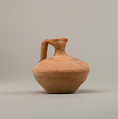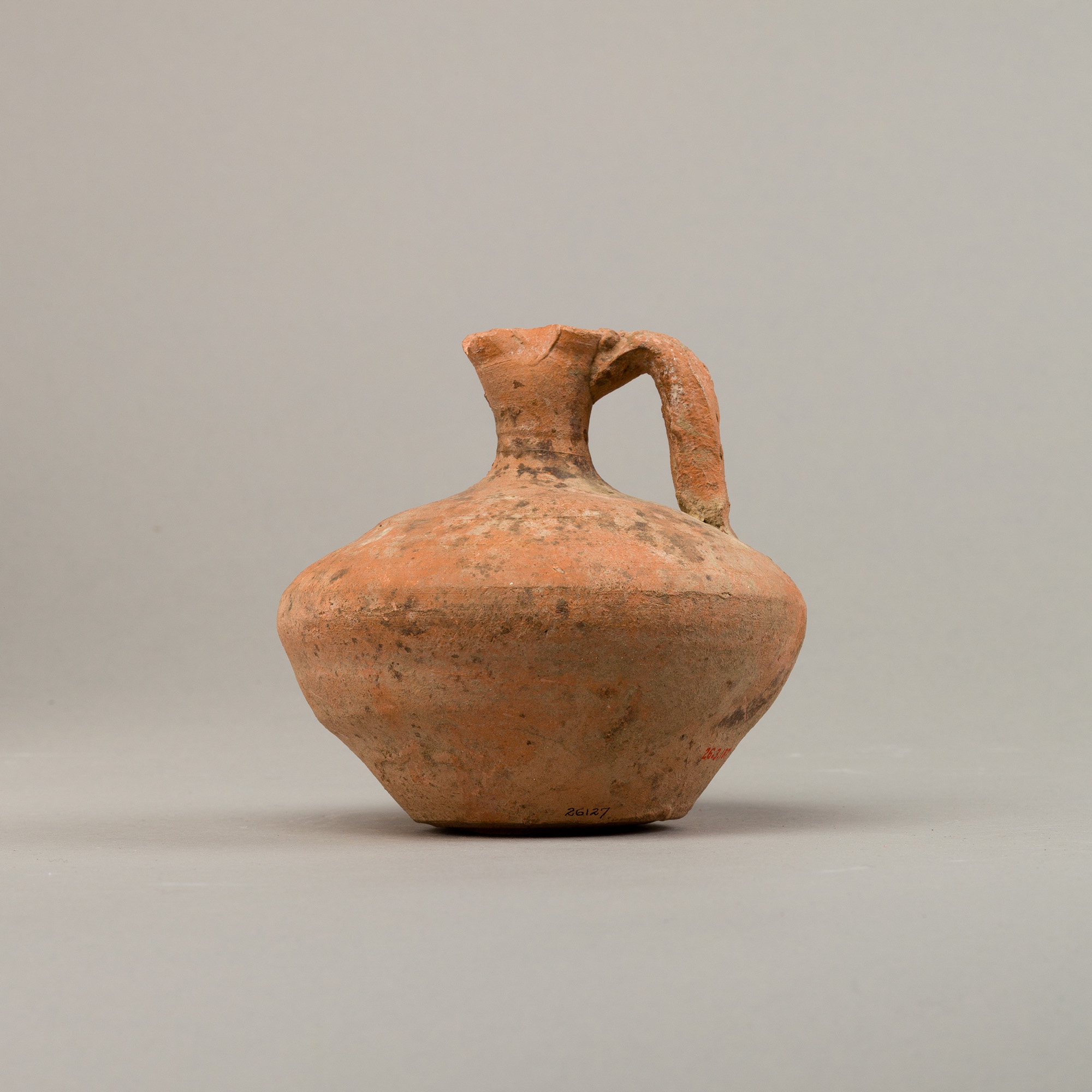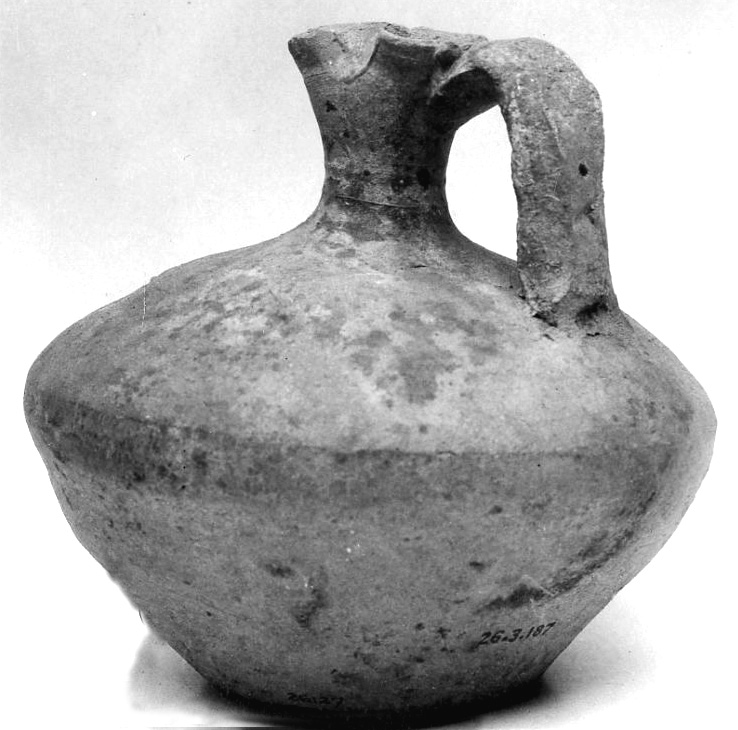Jug with pinched trefoil rim
Roman Period
Not on view
Most of the archaeological finds from the Tomb of Nespekashuty originate from the courtyard and first chamber of the tomb. While the relief finds can be assigned with confidence to the tomb, the other general finds and graffiti testify to a long usage life. This juglet dates to the first or second centuries of the Roman Period, most probably first century AD, some seven hundred years after Nespekashuty's burial.
The courtyard finds help to sketch the long life and various incarnations of the tomb. Nespekashuty had used for his tomb the courtyard and causeway of an earlier Dynasty 11 tomb of a high official of Mentuhotep II. That tomb's position in the northern cliffs of Deir el Bahri, and above the subsequently built temple of Hatshepsut made it suited for certain reuses. Already in the Third Intermediate Period the tomb was reused for a burial and seemingly for overflow off offerings from the Hathor Shrine in Hatshepsut's Temple. Possibly such a bond with the Hathor Shrine played a role in Nespekashuty's emphasis of Hathor inside his tomb. By the fifth century, the tomb was falling into ruin, but in the Ptolemaic and Roman Period prayerful graffiti testifiy to a new phase of use as a shrine attached to a Hesy or blessed person. In the Late Antique Period the tomb then became the dwelling of Coptic monks.
This image cannot be enlarged, viewed at full screen, or downloaded.
This artwork is meant to be viewed from right to left. Scroll left to view more.




